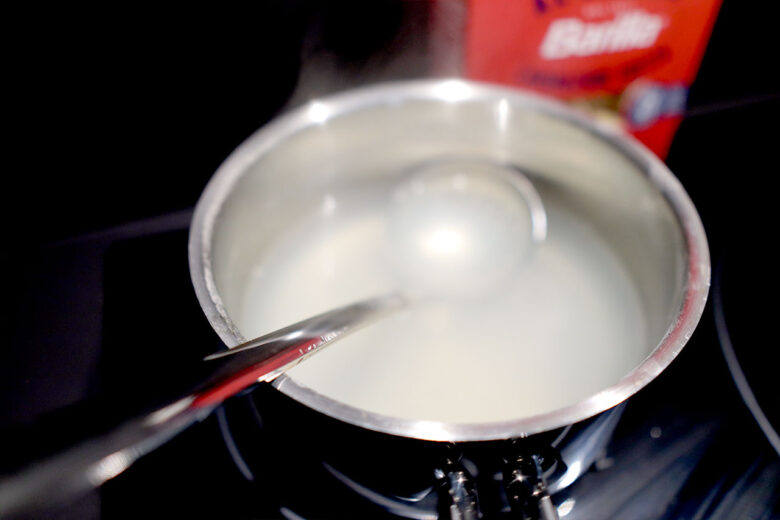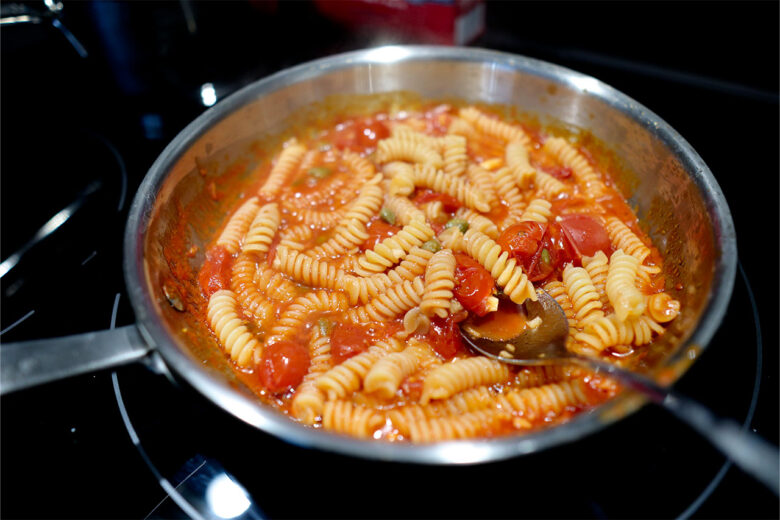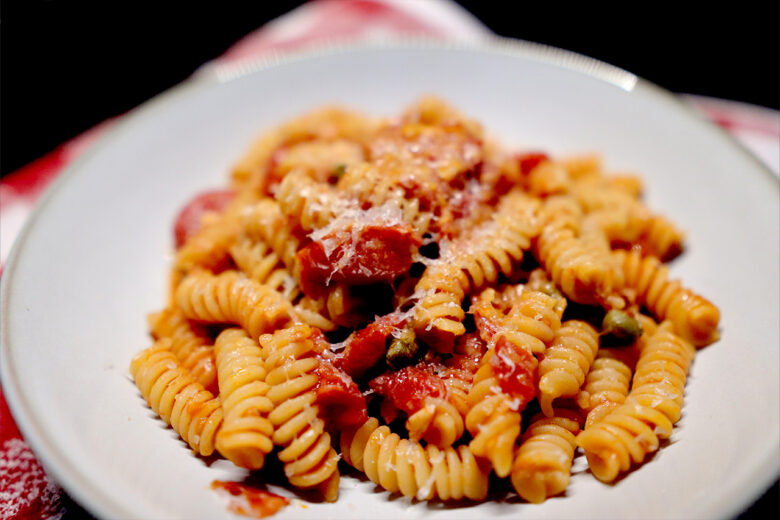Thinking about trying Barilla’s Al Bronzo pasta? We gave it a test, and here’s what we think.
It’s not every day that a top Italian pasta brand releases an entirely new line of dried pastas. So when Barilla came out with their Al Bronzo line, we just had to give it a try.
Barilla’s history dates back to 1877, when Pietro Barilla opened up a bread and pasta shop in Parma, a city in Italy’s Emilia-Romagna area. Today, the company is headed by his three great-grandsons, Guido, Luca, and Paolo, and has made a name for itself as the biggest pasta maker in the world.
We’ve long been fans of Barilla’s Collezione pasta and think that it gives great value for the money for home cooks. It’s made from durum wheat semolina flour and extruded through bronze dies in accordance with Italian pasta-making tradition.
Al Bronzo pasta is supposed to take this to another level.
The Al Bronzo pasta line features six traditional pasta shapes: bucatini, fusilli, linguine, rigatoni, penne rigate, and spaghetti.
The big deal about Al Bronzo pasta is its rough, porous surface, which holds on to the sauce exceptionally well.
Barilla says Al Bronzo is made from its highest-quality durum wheat blend that gives the pasta the perfect bite.
But the big deal about Al Bronzo pasta is its rough, porous surface, which comes from these special bronze dies that Barilla invented just for this line. It gives the pasta a better mouthfeel helps the sauce stick more.
To find out if Barilla Al Bronzo pasta stands up to the hype, I gave the fusilli a try.
Right off the bat, after opening the fusilli, I could see and feel the rough, pours texture Barilla talk about on their website.

The shapes felt grainy, almost like very fine sandpaper, and even made a scratchy sound when I ran my finger over them before cooking. Yes, they aren’t as rugged as handmade pasta—but for mass-produced, store-bought pasta, they come pretty close to that feel.
The instructions from Barilla on the package say to cook the fusilli for 11 minutes. I boiled mine in well-salted water for 9, whipped up a quick sauce while that was going (two glugs of extra virgin olive oil, two gloves of garlic, canned cherry tomatoes, a splash of red wine vinegar, a handful of capers, some salt), then tossed them together, with a splash of pasta water, and let them simmer in the sauce for another 1-2 minutes.
How did the Barilla Al Bronzo pasta turn out?
To make a long story short, it was good enough that I’d want to cook and eat it again.
The first positive sign was how starchy the water got while boiling the fusilli. If pasta doesn’t give off that starch in the water, it’s not as high-quality. The Al Bronzo pasta passed this test with flying colors.

The second positive sign was the water’s color. It wasn’t just cloudy and white; it had a yellow tint. Durum wheat naturally has a golden hue in the fields, and that’s the color you hope to see when cooking semolina pasta.
The fusilli kept their shape and didn’t fall apart when I stirred them in the sauce. When I plated them and took a bite, they were firm and had a nice bounce, just the way al-dente pasta should be.

But the real surprise was how well they held the sauce, just like Barilla claimed the Al Bronzo line would. Every piece of fusillo (that’s the singular form of fusilli) was generously covered in my lightly-cooked tomato sauce. So much so that by the time I finished, there was hardly any sauce left on the plate!

All in all, the Al Bronzo pasta turned out delicious, and I’m happy I gave it a try. From now on, when I shop for Barilla, I’ll be picking the Al Bronzo line for sure.
Sure, there are better pastas out there—handmade, artisanal—but for store-bought dried pasta, Al Bronzo is top-notch. It’s budget-friendly, available in most stores, and perfect for whipping up tasty meals at home.
It gets the Home Cook World stamp of approval.

